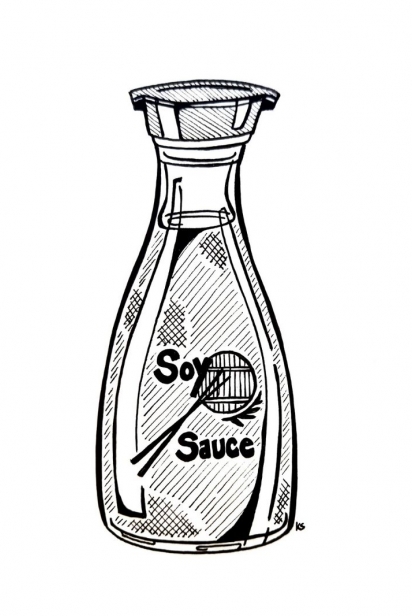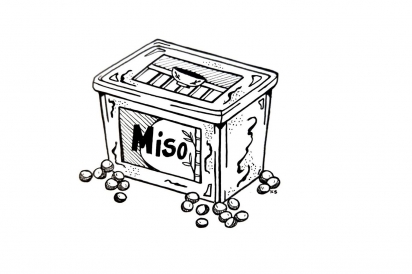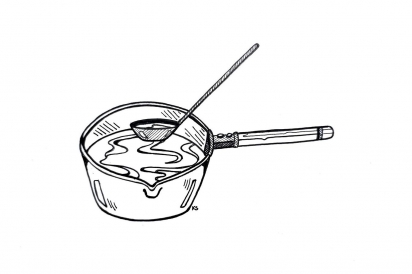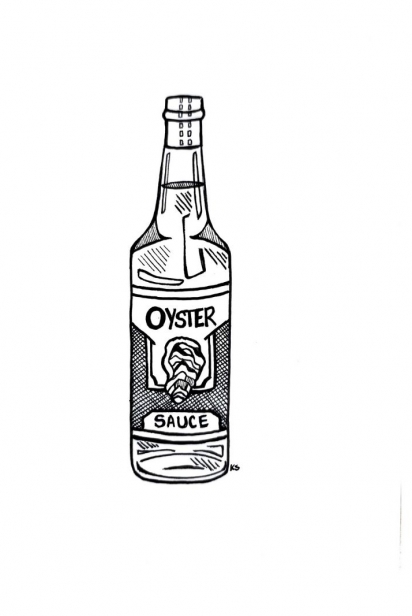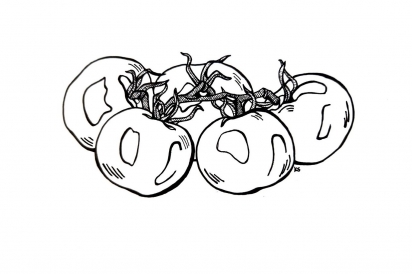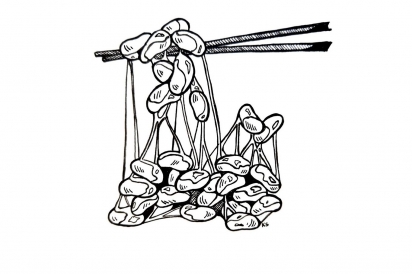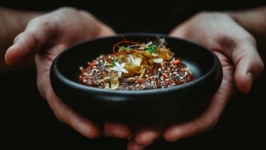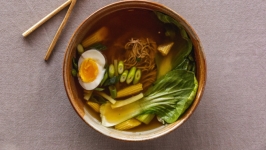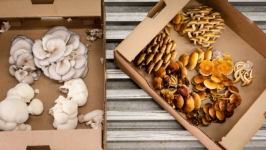13 Umami-Rich Pantry Staples
Umami is a Japanese word that loosely translates as “the essence of deliciousness.” Also known in the West as savoriness and considered the fifth taste alongside sweetness, saltiness, sourness and bitterness, it is often described as contributing a certain meatiness to dishes, even those in which no actual meat is present. If you're wondering how to elevate your cooking to the 5th level of deliciousness, here are some kitchen staples ready to boost the flavor profiles of your favorite dishes. And you may even have some of them on hand already.
Monosodium Glutamate (MSG)
Don’t buy into the propaganda, MSG is nothing more than umami in its purest form. Available in both liquid and powdered crystal form, you can use it to season before or after cooking. Just know that a little goes a long way. Usually ½ teaspoon is all you need for a pound of meat or vegetables.
Soy Sauce
For a double threat of umami and saltiness, look no further than good old-fashioned soy sauce. Chances are you aren’t using this condiment for all its worth. It can work its magic on things far beyond stir fries and other Asian dishes. Use it to marinate skirt steak for the world’s best fajitas or at the end of cooking to add a healthy dose of umami to nearly anything.
Seaweed
Seaweed is actually a pretty broad category with myriad uses and applications in the kitchen, all of which add umami in their own way. Crumbled nori brings umami to the popular rice seasoning furikake, wakame pumps up soups and salads with flavor and texture and hydrated hijiki with sesame oil makes the perfect topper for that poke bowl.
Miso Paste
An umami staple in Japanese kitchens, miso paste is made by fermenting soybeans with salt and koji. Other ingredients such as rice, barley, seaweed, buckwheat, millet, rye and wheat may also be used. Its flavor is salty-sweet and actually quite mild. Use it as a base for soups, slather it all over your salmon before broiling or mix it with butter to melt over sizzling meat or vegetables.
Dashi
Nothing brings umami in liquid form quite like dashi, a Japanese stock made from simmering sheets of dried kombu and flakes of dried, fermented bonito called katsuobushi. It’s the stock of choice for making miso soup and donburi bowls. If you can’t find the ingredients to make homemade dashi, hydrated instant hondashi crystals will work just fine in a pinch.
Sardines
Sardines may be milder in flavor than anchovies, but they can bring just as much powerful umami flavor. They are probably best kept whole and eaten on toast or crackers, perhaps with a brightly dressed salad-like garnish. You can also toss them into pastas or serve them over greens for an umami-packed salad.
Koji
Koji is the fungus responsible for the secondary fermentation that gives miso, sake and soy sauce their characteristic umami. If you’ve got some time on your hands and an appetite for experimentation, you can use it to inoculate just about anything. Daring chefs have begun marinating meats and seafood with the substance with remarkable results to hear them tell it.
Mushroom Powder
Can’t get over your fear of MSG? Fine, use mushroom powder instead. You can buy it pre-ground as a seasoning or you can save some money by blitzing a few dried shiitakes in a spice grinder. It’s great on steaks or burgers and does wonders for a bowl of popcorn.
Oyster/Fish Sauce
Although quite different in their applications, oyster sauce and fish sauce both get their glutamates from long-fermented seafood. Fish sauce is a staple umami-booster in Southeast Asian cuisine. It is common in Thai stir fries, while the Vietnamese use it to make a delicious caramel glaze for chicken wings and salmon, among other uses. Oyster sauce is often used in Chinese stir fry and dipping sauce.
Tomato Paste
There’s a reason why tomato-based sauces are so comforting and delicious. Ripe tomatoes are practically bursting with umami-producing glutamates. For a super-efficient shortcut, roast some concentrated tomato paste in a pan (it helps to develop the flavor and remove any tinniness) before you add your liquid to add a wallop of umami to sauces and chilis.
Aged Hard Cheese
Not that you need an excuse to add cheese to your food, but aged cheeses develop rich umami flavor as their proteins break down into glutamates over time. Leading the pack by a considerable margin is Parmigiano-Reggiano, or Parmesan, which is why it’s so often used to add flavor to pastas, soups, potatoes and vegetables. As a bonus, most aged cheeses are also lactose free!
Natto
With its pungent cheesy odor, slimy texture and distinct, earthy flavor, fermented soybeans called natto are nothing if not an acquired taste. Traditionally it is eaten at breakfast with soy sauce and mustard over rice. It can add even more umami punch to miso soup or noodles and pairs surprisingly well with eggs. For added umami flavor, stir it like crazy.
Anchovies
Anchovies get a bad rap as a sort of novelty pizza topping, but they are the very thing that makes Caesar salad dressing so irresistibly delicious. They also work great mashed into a butter and basted over seared steak or as a base in the pungently fragrant yet mouthwatering sauce for pasta puttanesca.




